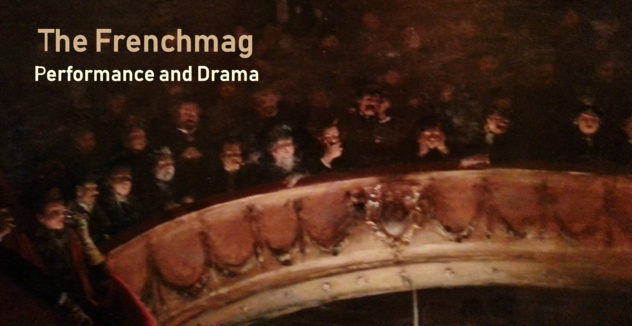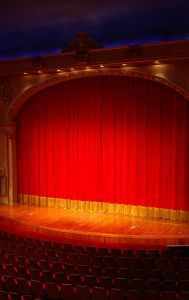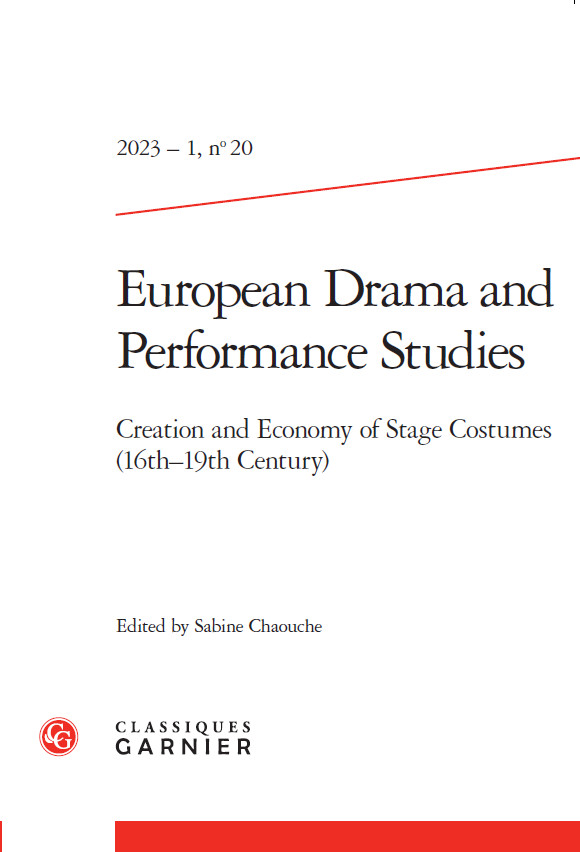Le Théâtre par Martine David
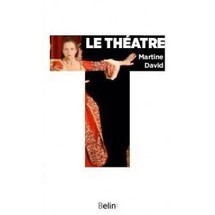
Belin, coll. Belin Poche, avril 2012, 544 p.
Présentation :
Du culte dionysiaque de l'antiquité aux formes les plus contemporaines, le théâtre a pris au fil des siècles des visages multiples. Ecriture accomplie ou improvisation, spectacle initiatique ou pur divertissement, comédie ou tragédie, toutes les formes de jeu et de relation avec le spectateur continuent de cohabiter et traversent le temps. Ce livre examine toutes les composantes de l'écriture et de la représentation théâtrale : typologie des oeuvres et des personnages, structure et temps de l'action, mais aussi statut du comédien, lieux de la représentation, techniques de la scénographie.
Nous suivons dans leur complexité le travail des gens de théâtre, l'ambiguïté des relations qui se nouent entre la scène et le public. En fin d'ouvrage, un répertoire chronologique (oeuvres et auteurs), une bibliographie, un index des notions et un index des noms propres permettent une consultation aisée et un approfondissement de la lecture.
Présentation :
Du culte dionysiaque de l'antiquité aux formes les plus contemporaines, le théâtre a pris au fil des siècles des visages multiples. Ecriture accomplie ou improvisation, spectacle initiatique ou pur divertissement, comédie ou tragédie, toutes les formes de jeu et de relation avec le spectateur continuent de cohabiter et traversent le temps. Ce livre examine toutes les composantes de l'écriture et de la représentation théâtrale : typologie des oeuvres et des personnages, structure et temps de l'action, mais aussi statut du comédien, lieux de la représentation, techniques de la scénographie.
Nous suivons dans leur complexité le travail des gens de théâtre, l'ambiguïté des relations qui se nouent entre la scène et le public. En fin d'ouvrage, un répertoire chronologique (oeuvres et auteurs), une bibliographie, un index des notions et un index des noms propres permettent une consultation aisée et un approfondissement de la lecture.
L'Analyse des spectacles - Théâtre, mime, danse, danse-théâtre, cinéma. 2e édition. Patrice Pavis
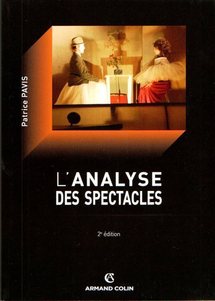
Armand Colin, avril 2012, 431 p.
Présentation :
Redonner au spectateur confiance en son propre regard, une confiance qu'il n'aurait jamais dû perdre, telle est l'ambition de ce parcours à travers les spectacles et leurs analyses. Théâtre parlé, mime, danse, danse-théâtre, performance, cinéma et médias audio-visuels : comment les analyser spécifiquement ? Après une mise au point sur l'état de la recherche et les instruments de la description et de l'interprétation, les oeuvres sont systématiquement radiographiées.
Comment aborder leurs diverses composantes : jeu de l'acteur, voix, musique, espace, temps, costumes, éclairages, etc ? L'analyse se place résolument du côté du récepteur : comment reconstitue-t-il la logique dramaturgique de l'oeuvre, avec quelles réactions conscientes et inconscientes ? Cette édition augmentée de deux annexes prend en compte les nouvelles méthodes d'analyse autant que le renouvellement des formes esthétiques et culturelles, bien au-delà du cadre étroit de la mise en scène de théâtre et des théories de la performativité.
Elle revient sur la figure du spectateur dont la récente promotion, notamment pour les spectacles postmodernes et postdramatiques, ne va pourtant pas sans poser de sérieux problèmes théoriques pour l'analyse.
Source: Dramatica
Présentation :
Redonner au spectateur confiance en son propre regard, une confiance qu'il n'aurait jamais dû perdre, telle est l'ambition de ce parcours à travers les spectacles et leurs analyses. Théâtre parlé, mime, danse, danse-théâtre, performance, cinéma et médias audio-visuels : comment les analyser spécifiquement ? Après une mise au point sur l'état de la recherche et les instruments de la description et de l'interprétation, les oeuvres sont systématiquement radiographiées.
Comment aborder leurs diverses composantes : jeu de l'acteur, voix, musique, espace, temps, costumes, éclairages, etc ? L'analyse se place résolument du côté du récepteur : comment reconstitue-t-il la logique dramaturgique de l'oeuvre, avec quelles réactions conscientes et inconscientes ? Cette édition augmentée de deux annexes prend en compte les nouvelles méthodes d'analyse autant que le renouvellement des formes esthétiques et culturelles, bien au-delà du cadre étroit de la mise en scène de théâtre et des théories de la performativité.
Elle revient sur la figure du spectateur dont la récente promotion, notamment pour les spectacles postmodernes et postdramatiques, ne va pourtant pas sans poser de sérieux problèmes théoriques pour l'analyse.
Source: Dramatica
Opera by Robert Cannon
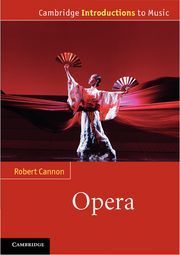
What is opera and how does it work? How has this dramatic form developed and what is its relevance in the modern world? Perfect for music students and opera-goers, this introductory guide addresses these questions and many more, exploring opera as a complete theatrical experience. Organised chronologically and avoiding technical musical terminology, the book clearly demonstrates how opera reflected and reacted to changes in the world around it. A special feature of the volume is the inclusion of illustrative tables throughout. These provide detailed, easy to follow analysis of arias, scenes and acts; visual guides to historical movements; and chronologies relating to genres and individual composers' works. Overall, the book fosters an understanding of opera as a living form as it encounters and uses material from an ever expanding repertoire in time, place and culture.
Features
• Presents a dedicated study of opera as a dramatic form, showing how opera works as a complete theatrical experience and how this is achieved
• Explains in an easy-to-follow way how particular acts, scenes, arias and ensembles work, avoiding technical musical analysis
• Includes unique tables which clearly illustrate the relationship between key cultural and social ideas and musical development, allowing readers to see how opera has been formed by its wider cultural, social and political context
Table of Contents
Introduction
Part I: 1. Pre-operatic forms
2. First operatic forms: Peri, Caccini, Monteverdi, Cavalli, Keiser
3. Formalization
4. Reform – the reintegration of elements
5. Comedy and the 'real world'
6. 'Authentic' performance
Part II: 7. Romanticism and romantic opera in Germany
8. Opera in nineteenth-century Italy
9. Grand Opéra and the visual language of opera
10. The Wagnerian revolution
11. Nationalists: vernacular language and music
12. The role of the singer
Part III: 13. The turn of the century and the crisis in opera
14. First modernism: symbolist and expressionist opera
15. The dramaturgy of opera: libretto – words and structure
16. Narrative opera: realistic and non-realistic
17. Radical narratives
18. Directors and the direction of opera
Appendices: 1. Motifs from Der Ring
2. The development of singing voices
3. The development of lyric theatre alternatives to 'opera'
4. Some major operas, artistic and political events of the twentieth century
Glossary of terms
Bibliography.
Paperback
Series: Cambridge Introductions to Music
ISBN:9780521746472
Publication date:February 2012
450pages
168 tables
Dimensions: 247 x 174 mm
Weight: 0.88kg
£17.99
http://www.cambridge.org/gb/knowledge/isbn/item6522282/Opera/?site_locale=en_GB
Features
• Presents a dedicated study of opera as a dramatic form, showing how opera works as a complete theatrical experience and how this is achieved
• Explains in an easy-to-follow way how particular acts, scenes, arias and ensembles work, avoiding technical musical analysis
• Includes unique tables which clearly illustrate the relationship between key cultural and social ideas and musical development, allowing readers to see how opera has been formed by its wider cultural, social and political context
Table of Contents
Introduction
Part I: 1. Pre-operatic forms
2. First operatic forms: Peri, Caccini, Monteverdi, Cavalli, Keiser
3. Formalization
4. Reform – the reintegration of elements
5. Comedy and the 'real world'
6. 'Authentic' performance
Part II: 7. Romanticism and romantic opera in Germany
8. Opera in nineteenth-century Italy
9. Grand Opéra and the visual language of opera
10. The Wagnerian revolution
11. Nationalists: vernacular language and music
12. The role of the singer
Part III: 13. The turn of the century and the crisis in opera
14. First modernism: symbolist and expressionist opera
15. The dramaturgy of opera: libretto – words and structure
16. Narrative opera: realistic and non-realistic
17. Radical narratives
18. Directors and the direction of opera
Appendices: 1. Motifs from Der Ring
2. The development of singing voices
3. The development of lyric theatre alternatives to 'opera'
4. Some major operas, artistic and political events of the twentieth century
Glossary of terms
Bibliography.
Paperback
Series: Cambridge Introductions to Music
ISBN:9780521746472
Publication date:February 2012
450pages
168 tables
Dimensions: 247 x 174 mm
Weight: 0.88kg
£17.99
http://www.cambridge.org/gb/knowledge/isbn/item6522282/Opera/?site_locale=en_GB
Chinese Theatre 3rd Edition by Jin Fu
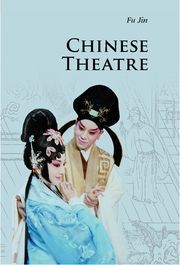
Many colorful theatrical activities can be found throughout China. The best known and most unique of these is perhaps traditional Chinese opera, which has a history of over 800 years. However, since the early twentieth century, following increased contact with the West, drama without music has also become popular in China. The development and prosperity of modern drama has created a new landscape for Chinese theater, which, as a whole, has become more diverse. In this illustrated introduction Fu Jin explores the origins and development of this distinctive branch of the Chinese arts.
Features
• An accessible introduction to the history of Chinese theater
• Written by a leading Chinese expert whose work is not widely available in the West
• Full color illustrations support the discussion throughout
Table of Contents
Foreword
1. Prelude: the origins of Chinese theater
2. Peaks towering magnificently: Song Xiwen and Yuan Zaju
3. Refinement and elegance: Chuanqi of the Ming and Qing dynasties and the era of Kunqu opera
4. Flowers in bloom: diversified opera varieties
5. Ups and downs: extending Chinese theater globally
Appendix: chronological table of the Chinese dynasties.
3rd Edition
Jin Fu, National Academy of Chinese Theatre Arts
Paperback
Series: Introductions to Chinese Culture
ISBN:9780521186667
Publication date:March 2012
144pages
120 b/w illus.
Dimensions: 230 x 156 mm
Weight: 0.27kg
£12.99
http://www.cambridge.org/gb/knowledge/isbn/item6612603/Chinese%20Theatre/?site_locale=en_GB
Features
• An accessible introduction to the history of Chinese theater
• Written by a leading Chinese expert whose work is not widely available in the West
• Full color illustrations support the discussion throughout
Table of Contents
Foreword
1. Prelude: the origins of Chinese theater
2. Peaks towering magnificently: Song Xiwen and Yuan Zaju
3. Refinement and elegance: Chuanqi of the Ming and Qing dynasties and the era of Kunqu opera
4. Flowers in bloom: diversified opera varieties
5. Ups and downs: extending Chinese theater globally
Appendix: chronological table of the Chinese dynasties.
3rd Edition
Jin Fu, National Academy of Chinese Theatre Arts
Paperback
Series: Introductions to Chinese Culture
ISBN:9780521186667
Publication date:March 2012
144pages
120 b/w illus.
Dimensions: 230 x 156 mm
Weight: 0.27kg
£12.99
http://www.cambridge.org/gb/knowledge/isbn/item6612603/Chinese%20Theatre/?site_locale=en_GB
Mask and Performance in Greek Tragedy From Ancient Festival to Modern Experimentation by David Wiles
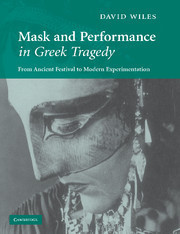
Why did Greek actors in the age of Sophocles always wear masks? In this book, first published in 2007, David Wiles provided the first book-length study of this question. He surveys the evidence of vases and other monuments, arguing that they portray masks as part of a process of transformation, and that masks were never seen in the fifth century as autonomous objects. Wiles goes on to examine experiments with the mask in twentieth-century theatre, tracing a tension between the use of masks for possession and for alienation, and he identifies a preference among modern classical scholars for alienation. Wiles declines to distinguish the political aims of Greek tragedy from its religious aims, and concludes that an understanding of the mask allows us to see how Greek acting was simultaneously text-centred and body-centred. This book challenges orthodox views about how theatre relates to ritual, and provides insight into the creative work of the actor.
Features
• Offers a new perspective on masks in ancient and modern theatre performance
• Will appeal to both students and scholars in the areas of classical studies and theatre
• Contains over sixty images which illustrate the text
Table of Contents
1. Introduction
2. The evidence of vases
3. The sculptural art of the Greek mask-maker
4. Mask and modernism
5. Physical theatre and mask in the twentieth century
6. Mask and text: the case of Hall's Oresteia
7. The mask as musical instrument
8. Masks and polytheism
9. The mask of Dionysos
10. Sacred viewing: 'theorizing' the ancient mask
11. Mask and self
Epilogue: to the performer.
Paperback
ISBN:9781107404793
Publication date:July 2012
332pages
Dimensions: 246 x 189 mm
Not yet published - available from July 2012
£23.0023.00
http://www.cambridge.org/gb/knowledge/isbn/item6860672/Mask%20and%20Performance%20in%20Greek%20Tragedy/?site_locale=en_GB
Features
• Offers a new perspective on masks in ancient and modern theatre performance
• Will appeal to both students and scholars in the areas of classical studies and theatre
• Contains over sixty images which illustrate the text
Table of Contents
1. Introduction
2. The evidence of vases
3. The sculptural art of the Greek mask-maker
4. Mask and modernism
5. Physical theatre and mask in the twentieth century
6. Mask and text: the case of Hall's Oresteia
7. The mask as musical instrument
8. Masks and polytheism
9. The mask of Dionysos
10. Sacred viewing: 'theorizing' the ancient mask
11. Mask and self
Epilogue: to the performer.
Paperback
ISBN:9781107404793
Publication date:July 2012
332pages
Dimensions: 246 x 189 mm
Not yet published - available from July 2012
£23.0023.00
http://www.cambridge.org/gb/knowledge/isbn/item6860672/Mask%20and%20Performance%20in%20Greek%20Tragedy/?site_locale=en_GB
The Making of the West End Stage Marriage, Management and the Mapping of Gender in London, 1830–1870 by Jacky Bratton
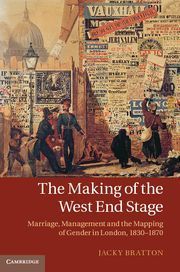
All roads lead to London - and to the West End theatre. This book presents a new history of the beginnings of the modern world of London entertainment. Putting female-centred, gender-challenging managements and styles at the centre, it redraws the map of performance history in the Victorian capital of the world. Bratton argues for the importance in Victorian culture of venues like the little Strand Theatre and the Gallery of Illustration in Regent Street in the experience of mid-century London, and of plays drawn from the work of Charles Dickens as well as burlesques by the early writers of Punch. Discovering a much more dynamic and often woman-led entertainment industry at the heart of the British Empire, this book seeks a new understanding of the work of women including Eliza Vestris, Mary Ann Keeley and Marie Wilton in creating the template for a magical new theatre of music, feeling and spectacle.
Features
• Provides a new, untold history of the beginning of London's West End theatre
• Challenges assumptions about Victorian middle-class leisure and respectable fears, presenting a more positive and relevant history of the modern entertainment world
• Seeks out the women who contributed to the birth of modern performance culture in London, discovering that the entertainment industry was often woman-led
Table of Contents
Introduction
Part I. Mapping:
1. Why the West End?
2. The Era: hierarchies, seriousness and the organ of the profession
3. Bohemian domesticity: the city of the mind
Part II. Making:
4. Performing the crisis
5. The shaping of West End management
6. Showtime
Conclusion
Bibliography.
Hardback
ISBN:9780521519014
Publication date:October 2011
230pages
9 b/w illus. 1 map
Dimensions: 228 x 152 mm
Weight: 0.51kg
In stock £55.00
http://www.cambridge.org/gb/knowledge/isbn/item6491254/The%20Making%20of%20the%20West%20End%20Stage/?site_locale=en_GB
Features
• Provides a new, untold history of the beginning of London's West End theatre
• Challenges assumptions about Victorian middle-class leisure and respectable fears, presenting a more positive and relevant history of the modern entertainment world
• Seeks out the women who contributed to the birth of modern performance culture in London, discovering that the entertainment industry was often woman-led
Table of Contents
Introduction
Part I. Mapping:
1. Why the West End?
2. The Era: hierarchies, seriousness and the organ of the profession
3. Bohemian domesticity: the city of the mind
Part II. Making:
4. Performing the crisis
5. The shaping of West End management
6. Showtime
Conclusion
Bibliography.
Hardback
ISBN:9780521519014
Publication date:October 2011
230pages
9 b/w illus. 1 map
Dimensions: 228 x 152 mm
Weight: 0.51kg
In stock £55.00
http://www.cambridge.org/gb/knowledge/isbn/item6491254/The%20Making%20of%20the%20West%20End%20Stage/?site_locale=en_GB
Performing Greek Comedy by Alan Hughes
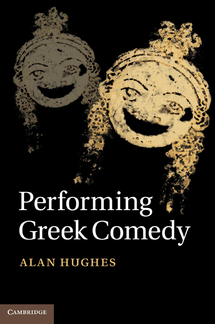
Alan Hughes presents a new complete account of production methods in Greek comedy. The book summarises contemporary research and disputes, on such topics as acting techniques, theatre buildings, masks and costumes, music and the chorus. Evidence is re-interpreted and traditional doctrine overthrown. Comedy is presented as the pan-Hellenic, visual art of theatre, not as Athenian literature. Recent discoveries in visual evidence are used to stimulate significant historical revisions. The author has directly examined 350 vase scenes of comedy in performance and actor-figurines, in 75 collections, from Melbourne to St Petersburg. Their testimony is applied to acting techniques and costumes, and women's participation in comedy and mime. The chapters are arranged by topic, for convenient reference by scholars and students of theatre history, literature, classics and drama. Overall, the book provides a fresh practical insight into this continually developing subject.
Features
• Based on up-to-date, contemporary research in the archaeology of Greek comedy and theatre, replacing previous outdated studies which overlook visual evidence
• Explores comedy as Greek theatrical performance rather than Athenian literature, providing new insights into acting methods, masks and the role of women
• Clearly organised by topic, the book does not require a knowledge of Greek and includes a helpful bibliography
Table of Contents
1. Comedy in art, Athens and abroad
2. Poets of Old and Middle Comedy
3. Theatres
4. The comic chorus
5. Music in comedy
6. Acting, from lyric to dual consciousness
7. Technique and style of acting comedy
8. The masks of comedy
9. Costumes of Old and Middle Comedy
10. Comedy and women
11. New Comedy
Catalogue of objects discussed: vases, terracottas, other media
Bibliography.
Hardback
ISBN:9781107009301
Publication date:October 2011
328pages
65 b/w illus. 2 tables
Dimensions: 228 x 152 mm
Weight: 0.66kg
£60.00
http://www.cambridge.org/gb/knowledge/isbn/item6528297/Performing%20Greek%20Comedy/?site_locale=en_GB
Features
• Based on up-to-date, contemporary research in the archaeology of Greek comedy and theatre, replacing previous outdated studies which overlook visual evidence
• Explores comedy as Greek theatrical performance rather than Athenian literature, providing new insights into acting methods, masks and the role of women
• Clearly organised by topic, the book does not require a knowledge of Greek and includes a helpful bibliography
Table of Contents
1. Comedy in art, Athens and abroad
2. Poets of Old and Middle Comedy
3. Theatres
4. The comic chorus
5. Music in comedy
6. Acting, from lyric to dual consciousness
7. Technique and style of acting comedy
8. The masks of comedy
9. Costumes of Old and Middle Comedy
10. Comedy and women
11. New Comedy
Catalogue of objects discussed: vases, terracottas, other media
Bibliography.
Hardback
ISBN:9781107009301
Publication date:October 2011
328pages
65 b/w illus. 2 tables
Dimensions: 228 x 152 mm
Weight: 0.66kg
£60.00
http://www.cambridge.org/gb/knowledge/isbn/item6528297/Performing%20Greek%20Comedy/?site_locale=en_GB
